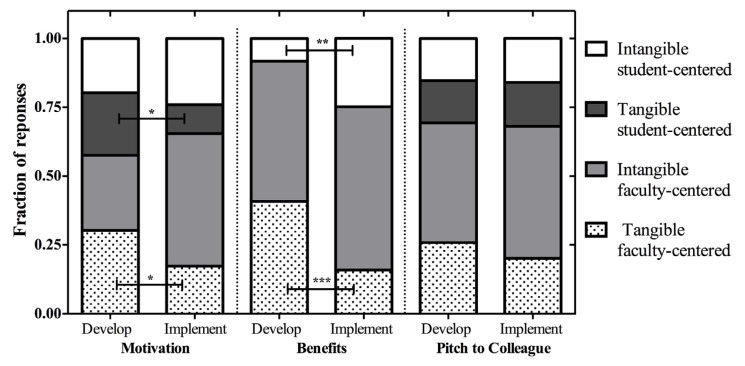FIGURE 2.
Relative frequency of each category of faculty responses. Motivations for faculty who develop CUREs are different than those of faculty who implement CUREs in that they state more tangible motivations, both faculty-centered (p = 0.03; n = 61) and student-centered (p = 0.05; n = 61). Those who develop CUREs collectively state faculty-centered tangible benefits more than those who implement CUREs (p = 0.003; n = 61) and those who implement CUREs state student-centered intangible benefits more often than those who develop CUREs (p = 0.03; n = 61). The relative frequency of pitch categories is not different between CURE types. Results are based on contingency tests and Fisher’s Exact test two-tail test of significance.

